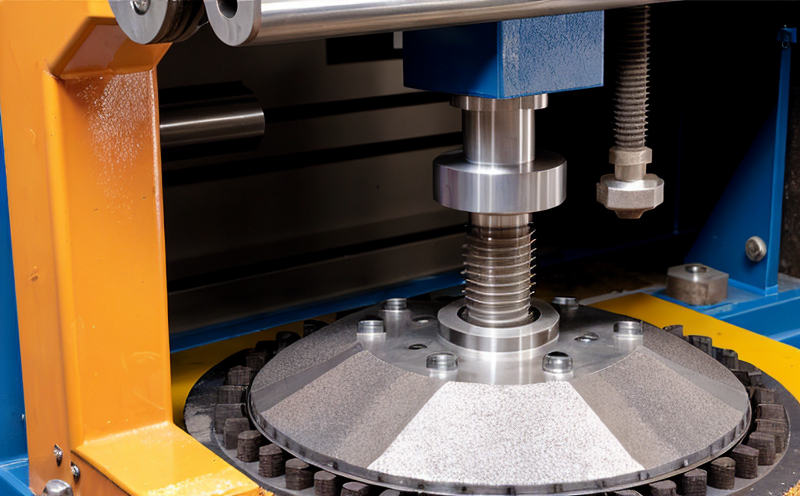ISO 1940-1 Balancing of Rotating Parts
The ISO 1940-1 standard provides a comprehensive framework for the balancing of rotating parts, which is crucial in ensuring mechanical reliability and minimizing vibration. This service focuses on the ISO 1940:2009 specification, which covers static and dynamic balancing at various rotational speeds.
The process involves the precise measurement of unbalance in rotating components such as fans, pumps, turbines, and other machinery. Unbalance can lead to increased wear, reduced efficiency, and potential failure if not addressed. Our laboratory ensures that all tests are conducted according to international standards, guaranteeing accuracy and consistency.
For static balancing, the balance weight is added or removed from the rotating part without any rotation. For dynamic balancing, it involves balancing at operating speed to account for centrifugal forces generated during operation. The standard specifies the criteria for determining acceptable levels of imbalance based on the type of machine, its intended use, and operational conditions.
The testing process starts with a detailed examination of the rotating component, including its geometry, mass distribution, and material properties. Once the component is prepared, it undergoes a series of measurements using sensitive equipment like laser vibrometers and accelerometers to capture vibration data at various points on the part. This data helps in identifying areas where unbalance exists.
The laboratory uses advanced balancing machines that can operate at different speeds to simulate real-world conditions. The process involves several steps:
- Initial measurement of the rotating component's mass and geometry.
- Identification of the location and magnitude of imbalances using vibration analysis.
- Application of corrective weights or adjustments to balance the part.
- Re-measurement after corrections to ensure compliance with ISO 1940-1 standards.
The final step is reporting, where detailed results are compiled into a comprehensive report. This includes specifications of the balancing parameters used, measurements taken, and any corrective actions implemented. The report also provides recommendations for maintenance or further testing if required.
Our laboratory adheres strictly to ISO 1940-1 standards, ensuring that all tests meet international quality benchmarks. This service is essential in maintaining mechanical reliability and reducing the risk of premature failure due to imbalance issues.
Quality and Reliability Assurance
- Consistency: Our laboratory uses state-of-the-art equipment calibrated to international standards, ensuring consistent results across all tests.
- Accuracy: Each measurement is cross-referenced with multiple instruments for verification, minimizing the risk of errors.
- Expertise: Our team comprises professionals with extensive experience in mechanical engineering and vibration analysis, providing reliable insights into balancing issues.
The precision and reliability of our testing process are paramount. We ensure that every test adheres to strict quality control measures, using advanced instrumentation and experienced personnel. This commitment to accuracy is reflected in the consistent results we deliver for all clients.
Our laboratory has a strong track record of providing reliable balancing services, contributing significantly to the longevity and performance of rotating machinery across various sectors including HVAC, manufacturing, and energy production.
Customer Impact and Satisfaction
- Improved Efficiency: Balanced components operate more efficiently, reducing energy consumption and operational costs.
- Extended Lifespan: Proper balancing extends the service life of rotating parts by minimizing wear and tear.
- Precise Measurements: Accurate results ensure that machinery meets performance specifications, enhancing overall reliability.
Our clients benefit from enhanced mechanical reliability, reduced downtime due to failures, and improved product quality. By adhering strictly to ISO 1940-1 standards, we provide services that are recognized globally for their accuracy and consistency. This ensures that our customers can trust the results obtained.
We strive to exceed expectations by offering timely service with minimal disruption to your operations. Our goal is to ensure that every customer leaves satisfied knowing they have received top-tier balancing solutions tailored to their specific needs.
International Acceptance and Recognition
The ISO 1940-1 standard has gained widespread acceptance in the mechanical engineering community, recognized by organizations worldwide. This service aligns with international best practices for rotating part balancing, ensuring that clients receive tests that are both accurate and internationally validated.
Our laboratory is accredited to perform these services according to ISO standards, which ensures compliance with global regulatory requirements. This accreditation provides assurance that the testing process meets rigorous quality control measures, leading to reliable results across different countries and industries.
The standard's broad acceptance means that balancing tests conducted in our laboratory are universally recognized as valid and trustworthy. Whether you're seeking certification for specific projects or simply need accurate balancing solutions, our service offers a globally accepted benchmark for mechanical reliability.





